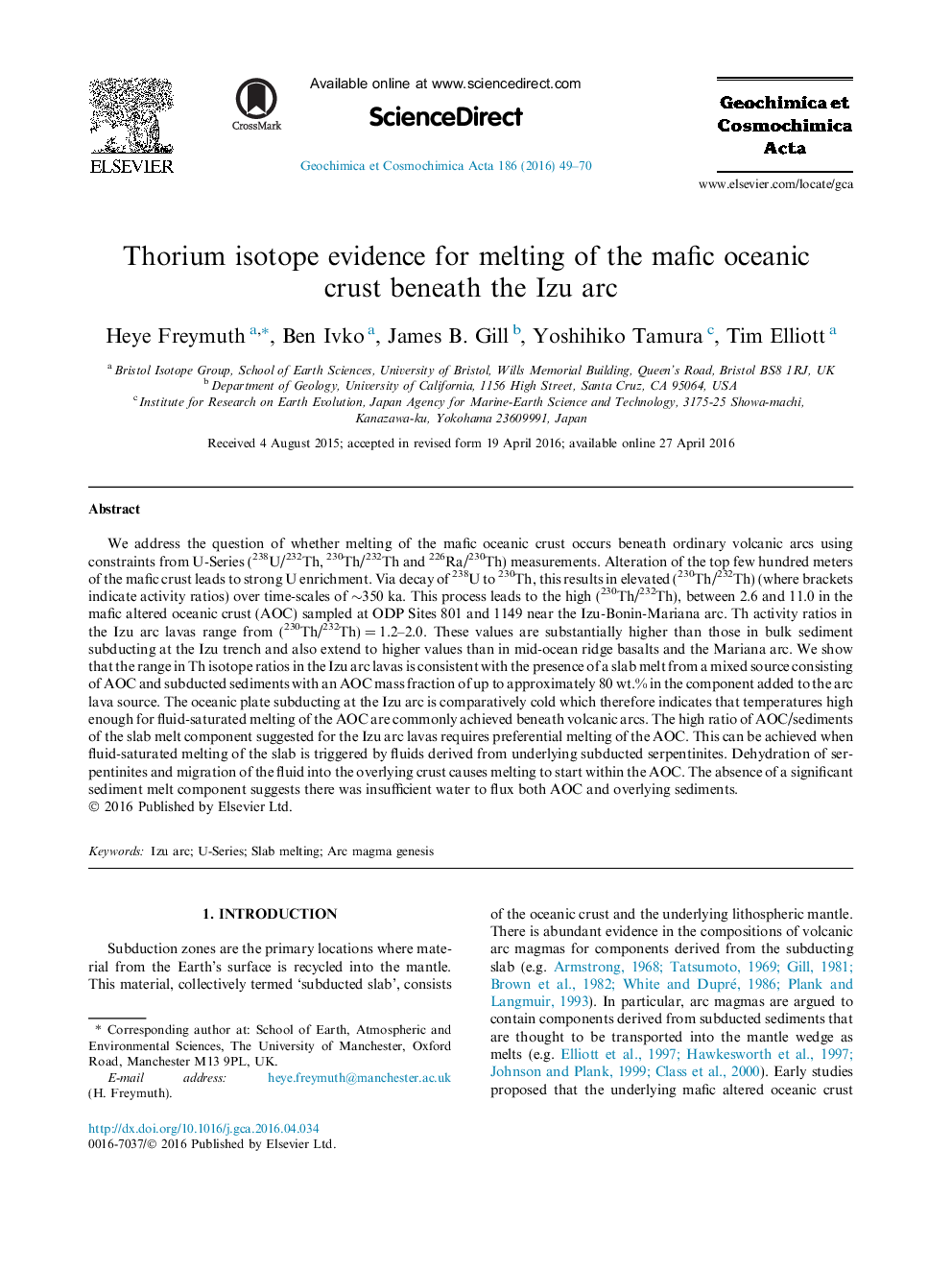| کد مقاله | کد نشریه | سال انتشار | مقاله انگلیسی | نسخه تمام متن |
|---|---|---|---|---|
| 6437279 | 1637971 | 2016 | 22 صفحه PDF | دانلود رایگان |
We address the question of whether melting of the mafic oceanic crust occurs beneath ordinary volcanic arcs using constraints from U-Series (238U/232Th, 230Th/232Th and 226Ra/230Th) measurements. Alteration of the top few hundred meters of the mafic crust leads to strong U enrichment. Via decay of 238U to 230Th, this results in elevated (230Th/232Th) (where brackets indicate activity ratios) over time-scales of ∼350 ka. This process leads to the high (230Th/232Th), between 2.6 and 11.0 in the mafic altered oceanic crust (AOC) sampled at ODP Sites 801 and 1149 near the Izu-Bonin-Mariana arc. Th activity ratios in the Izu arc lavas range from (230Th/232Th) = 1.2–2.0. These values are substantially higher than those in bulk sediment subducting at the Izu trench and also extend to higher values than in mid-ocean ridge basalts and the Mariana arc. We show that the range in Th isotope ratios in the Izu arc lavas is consistent with the presence of a slab melt from a mixed source consisting of AOC and subducted sediments with an AOC mass fraction of up to approximately 80 wt.% in the component added to the arc lava source. The oceanic plate subducting at the Izu arc is comparatively cold which therefore indicates that temperatures high enough for fluid-saturated melting of the AOC are commonly achieved beneath volcanic arcs. The high ratio of AOC/sediments of the slab melt component suggested for the Izu arc lavas requires preferential melting of the AOC. This can be achieved when fluid-saturated melting of the slab is triggered by fluids derived from underlying subducted serpentinites. Dehydration of serpentinites and migration of the fluid into the overlying crust causes melting to start within the AOC. The absence of a significant sediment melt component suggests there was insufficient water to flux both AOC and overlying sediments.
Journal: Geochimica et Cosmochimica Acta - Volume 186, 1 August 2016, Pages 49–70
